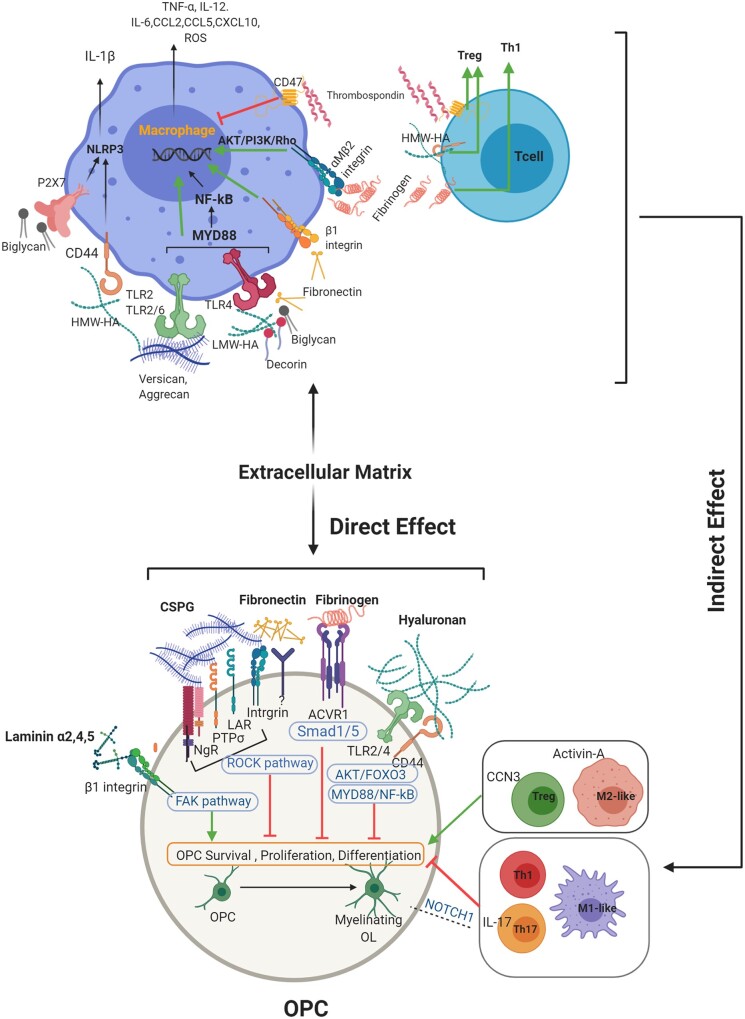Figure 3.
Direct interaction between ECM molecules and OPCs, and indirect effect of ECM on immune cells, affect OPCS and remyelination. This schematic aims to emphasize that remyelination is an outcome of the direct interplay between OPCs and ECM, and indirectly through the effects of ECM on immune cell activity. While CSPGs, hyaluronan, decorin, biglycan, fibrinogen and fibronectin promote an M1-like phenotype in macrophages, thrombospondin drives a regulatory response in both macrophages and T cells. The different phenotype of macrophages or T cells then contribute to oligodendrocyte development in diverse ways. Not strongly emphasized in this review, but also prominent, is that pro-inflammatory macrophages, Th1 and Th17 cells can directly impede OPCs, while a switch towards a regulatory phenotype such as M2-like macrophage and Treg improves tissue repair. ACVR1 = activin A receptor, type I; CCN3 = cellular communication network factor 3; FAK = focal adhesion kinase; Foxo3 = forkhead box O-3; HA = hyaluronan; HWA-HA = high molecular weight hyaluronan; LMW-HA = low molecular weight hyaluronan; LAR = leucocyte common antigen related; MYD88 = myeloid differentiation primary response 88; NF-kB = nuclear factor kappa-light-chain-enhancer of activated B cells; NgR = Nogo receptor; NLRP3 = NLR family pyrin domain containing 3; NOTCH1 = Notch homolog 1, translocation-associated; PTPσ = protein tyrosine phosphatase sigma; ROCK = Rho-associated protein kinase; ROS = reactive oxygen species; Smad1/5 = small mothers against decapentaplegic 1/5. Images were created using BioRender.

